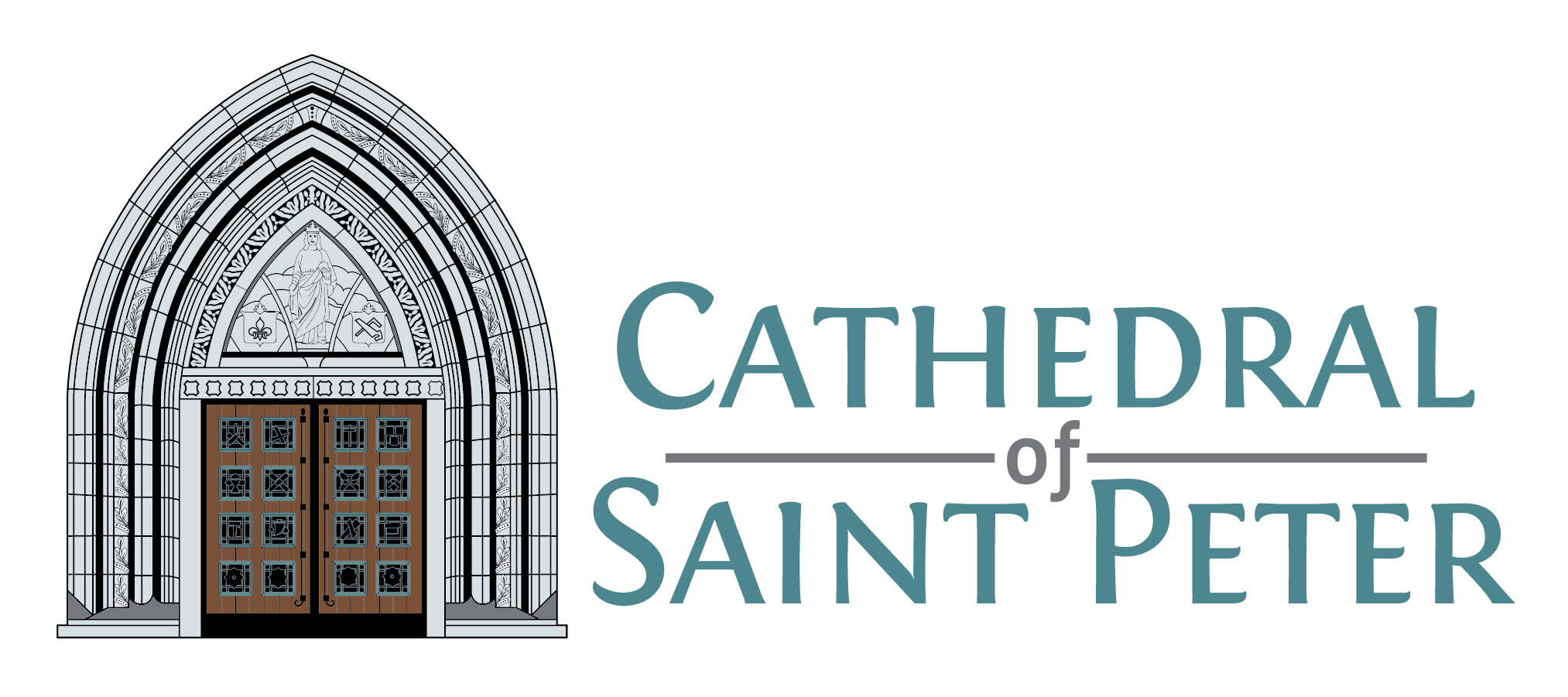Our History
The Cathedral of Saint Peter is a monument to the faith of people of good will and serves as a reminder and an invitation for all drawn to lift up their hearts to the Lord. In this church, the diocesan Church celebrates graced moments in the life of the local church.
The title Cathedral is taken from the Latin word cathedra, which means chair. In the sanctuary is a chair from which only the bishop of the local church may preside. It symbolizes his authority and responsibility for the flock entrusted to his care.
St. Peter Parish was established in 1842, and the first wooden frame church, under the patronage of St. Barnabas the Apostle, was built the following year. Changing the patron to St. Peter in 1847, the church was dedicated by Bishop William Quarter of Chicago. Over the next 20 years, the parish outgrew its small church and, in 1863, the cornerstone was laid for a new building. As the church neared completion, however, one of the main pillars crumbled and the top story fell. It was soon rebuilt and dedicated on November 6, 1866.
On January 7, 1887, Pope Leo XIII divided the Diocese of Alton, establishing the southernmost 28 counties of the state as the Diocese of Belleville, and designating the church of St. Peter as its new Cathedral.
On January 4, 1912, fire destroyed the Cathedral. But because the exterior walls were salvageable, a new church was built using the same basic design as the old and modeled after the interior of the Cathedral of Exeter in England. At that time, the crypt was added. On Ascension Thursday, May 5, 1937, fire again threatened the Cathedral. Fortunately, it was discovered while in its early stages. Because of the considerable damage to the west side of the nave, however, repairs and redecoration of the entire interior soon followed.
In the 1950s, Belleville’s third bishop, Albert R. Zuroweste, initiated a two-phase renovation of the Cathedral. The outer brick walls, which were laid in 1866 and had survived the great fire, were given a new stone facing of Winona split-face dolomite with Indiana limestone trim. The baptistry was reconstructed, the front terrace added, and the new east stairwell to the balcony constructed, bringing the first phase of the renovation to its completion.
The second phase of the project was more complicated. It involved extending the length of the Cathedral and adding the south nave, new sacristies, shrines, and the Blessed Sacrament Chapel. Begun in January of 1966, the project was completed December 1968. The renovation coincided with the liturgical changes of Vatican II so there was no need for later modification.
The cathedral museum is located next to the Blessed Sacrament Chapel.
Tour the Cathedral
Cathedral Tour Booklet
